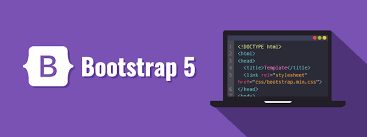Removing Redundancies
20 Feb 2024Removing redundancies is the name of the game in software engineering. As a software engineer, if you ever find yourself repeating the same action, whether it is writing a certain line of code, setting up a certain type of document, or modifying the style of a certain element in a webpage, there is a way to do it faster. Programmers have become experts at streamlining every process possible. From IDEs, keyboard shortcuts, reusable functions, built-in consoles, code autofills, easy-access debuggers, and the list continues, programmers are always striving to shorten the time they spend at the keyboard for any given task. Nobody wants to spend hours doing the same thing over and over again and if software engineers know anything it is that efficiency is key.
As the saying goes, necessity is the mother of invention, and the world of web development is no exception to this maxim. In the case of web development, programmers became tired of writing CSS style sheets from scratch for each web application and UI frameworks were born.
What is a UI Framework?
As the name suggests, a UI framework is a collection of libraries, styles, and preprogrammed elements that can be used when developing a user interface or web application. A few of the most popular frameworks include Bootstrap, Semantic-UI, and React. While each framework has its own advantages and utility, they all offer a multitude of tools to developers that reduce the amount of time spent at the keyboard. This essay will delve into the benefits of using a UI framework as well as the importance of knowing them as a software developer.

Benefits of using UI Framework
UI frameworks offer a reusable baseline for any web application. No longer will a developer spend precious time setting up the first few styles for the project. Instead the developer links in the chosen framework and like magic a baseline is set. This gives the developer more time to focus on the specific implementation of the application and allows them to be more efficient.
UI frameworks also offer preprogrammed design style so that a developer does not have to start from scratch with the web design. This removes much of the tedious, repetitive programming that would have taken place at the creation of the application.
Personally, I have found the utilization of Bootstrap 5 to be quite helpful in the implementation of web applications. Bootstrap offers common icons that I could quickly pull from and it allowed me to write minimal CSS which is often tedious. Instead of repeatedly tweaking the CSS until the applications were visually appealing, I could wrap elements in divs with Bootstrap classes and voila, the aesthetic was complete. Overall, Bootstrap allowed me to be more efficient in my web development endeavors.
Importance of Knowing UI Frameworks
As a software engineer, it is vital to be comfortable with a variety of UI Frameworks. Rarely will employees for web development corporations work solely with HTML and CSS. Rather, the company will likely utilize a framework such as Bootstrap or React. Knowing many frameworks makes a potential employee a more dynamic and employable candidate for a job position.
UI Frameworks are essential for an efficient and consistent web development environment. They provide programmers with resources such as libraries, icons, and a baseline for project creation. No software engineer has an excuse for not incorporating UI frameworks in their knowledge base. Remember, efficiency is key. Redundancies must be removed.